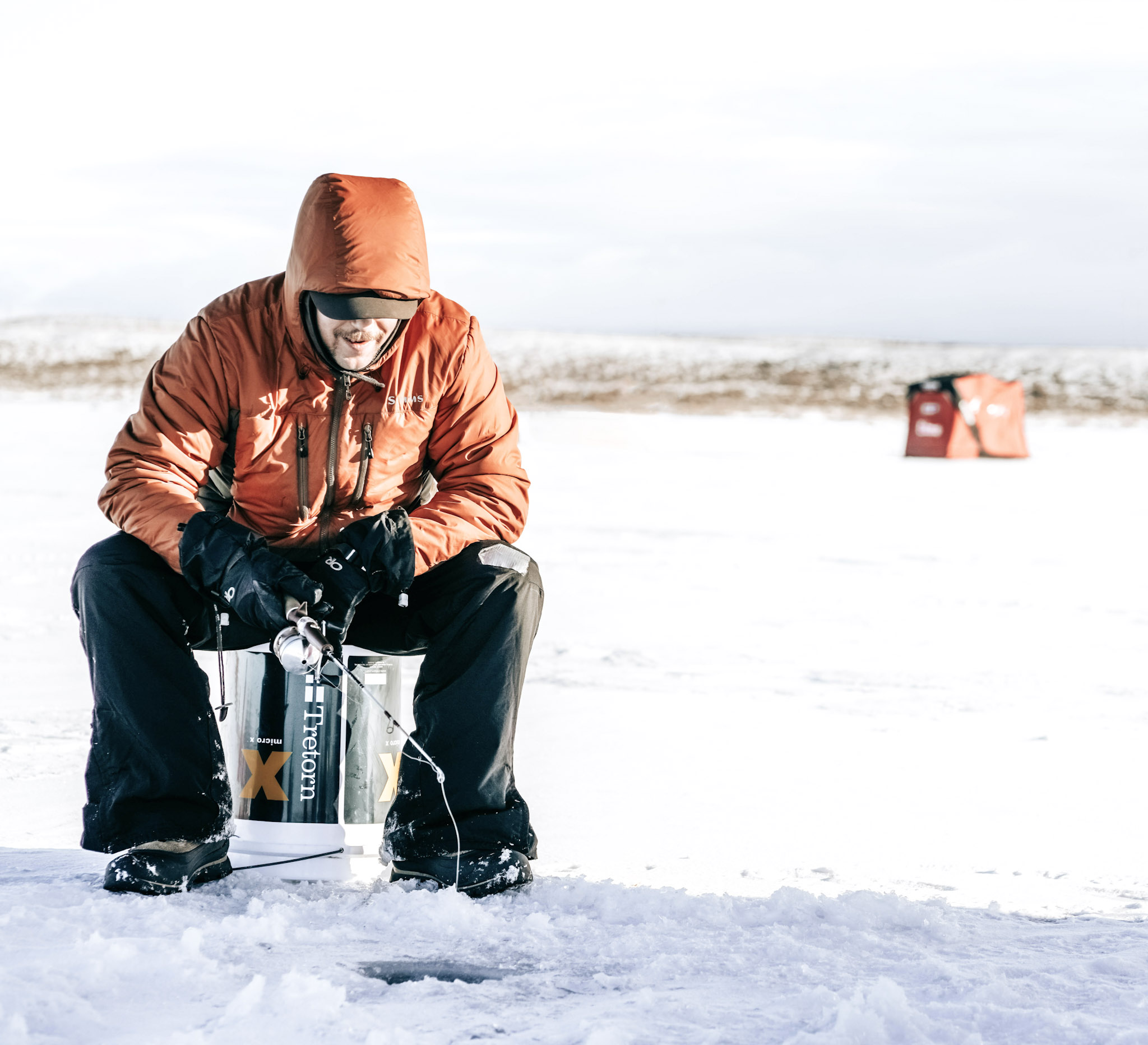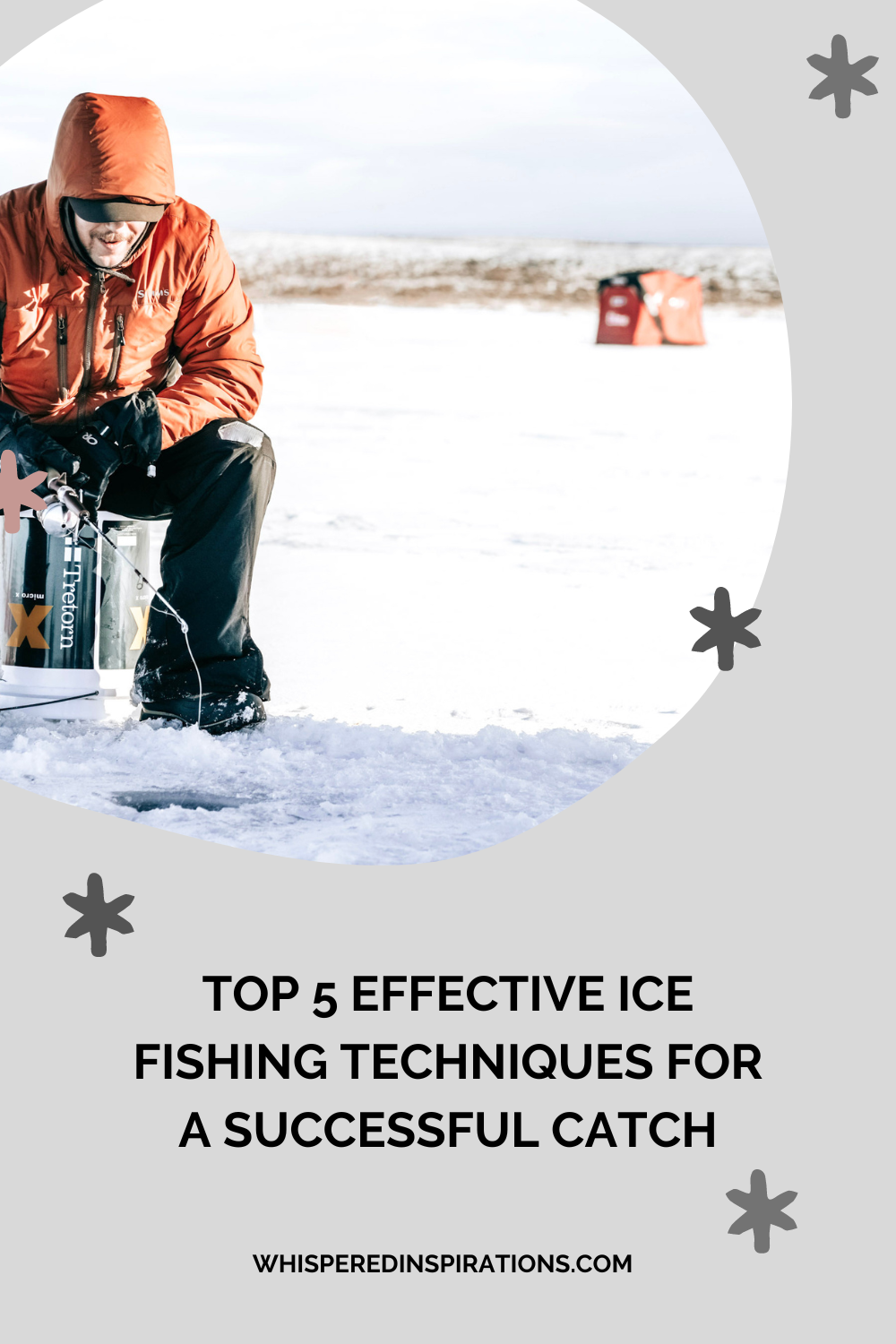Boost Your Winter Catch: Top 5 Effective Ice Fishing Techniques

Discover the Top 5 Effective Ice Fishing Techniques
As lakes and rivers freeze over in winter, a whole new world of fishing opportunities opens up.
Ice fishing allows targeting trophy fish that become inactive and inaccessible during frigid months.
While presenting unique challenges, the right fish activity forecast techniques enable consistent success with ice fishing. By integrating advanced fish activity forecast techniques, ice fishing enthusiasts can elevate their success rate. The Fishbox app, with its real-time insights and comprehensive data, becomes an indispensable ally in maximizing your chances of a rewarding ice fishing experience.
This article unravels the top 5 most productive ice fishing methods to help you conquer hard water this season.
Gain key insights into location, gear, presentations, and the nuances of catching winter fish. Let’s drop some lines through the ice!
Gearing Up with Ice Fishing Essentials
Before wetting a line, assemble several ice fishing must-haves. A sharp auger or saw bites holes through frozen surfaces.
Have quality ice scoops, skimmers, and lines with small hooks and jigs. An insulated shelter provides warmth and a basecamp directly over the holes.
Safety also remains paramount, so carry ice picks and flotation suits, and always confirm safe ice thickness with a ruler before venturing out.
Understanding Winter Fish Environments
In winter, fish adapt to frigid waters by altering behaviors and seeking preferable habitats.
As cold temperatures set in, fish metabolic rates slow down dramatically, becoming far less active to conserve calories.
This winter lethargy means fish prey less, preferring to ambush smaller passing targets requiring little exertion to capture.
When ice covers lakes, fish also gravitate towards certain refuge areas to survive.
These essential wintering “hot spots” include underwater springs, rivers/creek inflows, and lake sections absorbing more solar radiation that holds warmer water temperatures than surrounding areas.
Fish will roam underwater, seeking the warmth and extra oxygen these locations provide during peak winter conditions.
Savvy ice anglers should use their electronics or underwater cameras to identify these high-traffic winter holdout areas.
Search for zones holding large congregations of baitfish, which signals ideal areas for targeting lazy winter gamefish.
Understanding these environmental factors and adaptations helps narrow targets among generally inactive quarries in cold water scenarios.
Choosing the Right Equipment
Using perfectly balanced ice fishing rods and tackle makes a remarkable difference in detecting light bites and hooking fish.
Appropriate rods for hard water angling are on the shorter side (24 to 36 inches) in order to easily maneuver them in cramped ice shelters with your hands directly above the hole.
Rods also need to have a sensitive blank that telegraphs subtle pickups from inactive winter fish.
Pair this with low-stretch super lines or fluorocarbon that further aid in bite detection via enhanced sensitivity.
Terminal tackle also gets downsized – use tiny Aberdeen-style hooks, micro jigs, and compact spoons or jigging raps matching the small forage fish are eating. Sonar flashers, underwater cameras, and other electronics prove extremely useful for eliminating guesswork about where fish are positioned under the ice.
These tools detail real-time activity and locations to allow placing lures right on target. Dialing in properly balanced small, streamlined equipment improves ice fishing results tremendously.
Light, sensitive, and compact gear helps convert finicky winter bites into catches rather than frustrated misses.
Mastering Subtle Jigging Patterns
The most effective ice fishing method involves jigging lures or live bait in a manner that mimics injured prey struggling in distress.
This triggering presentation is accomplished by subtly shaking the bait as it flutters downward to portray movement.
Control the drop speed with a finger on the line while adding sporadic jigging action – quivering, fluttering, dead stops, and gentle lifting sets.
Electronics like flashers or underwater cameras let you closely monitor fish reactions to your jigging patterns and cadence.
You May Also Like:
- Water Activities To Try While On Vacation
- 7 Healthy Benefits of Eating Fish
- 4 Delicious Ways to Eat More Fish with The Saucy Fish Co.
- Tips To Revitalize Your Look & Boost Your Confidence
Remain alert to subtle bites indicated by rod tip ticks or bait inhales shown on the sonar. Adjust the combinations of lift, fall, and shake sequences until dialing the right formula to get fish chasing and striking.
When jig fishing, target the high percentage zones holding bait and fish. Watch the flasher screen for signs of fish moving in on suspended baits.
Even very light pick-ups should be met by slowly lifting the rod tip to take up excess slack.
This lets the angler lean back and sweep the rod laterally to drive home the hookset if bite forces feel promising.
During winter’s slow periods, fish often inhale stationary baits on the bottom or suspended below the hole, so you must be ready to respond.
Deploy Tip-Ups for Passive Fishing
Ice fishing with tip-ups allows covering more territory to connect with active fish.
Rig live bait like minnows or cut bait externally on treble hooks dangling enticingly.
Set the hook and display flag trigger when fish run off with the offering.
Use tip-ups to fan-cast several areas at once. Target productive-looking drop-offs, weed lines, or adjacent deeper holes around main fishing spots.
Let lively minnows do the fish-attracting work for you.
Exercising Patience and Adaptability
Given cold water conditions, most days bring fairly slow action.
But conditions constantly change under the ice, so remain mobile and willing to adjust tactics as needed.
Use smaller lures and natural colors when bites are finicky or get more aggressive with lure size and action to trigger reaction bites.
Above all, ice fishing rewards the patient angler. Persistently work areas using varied presentations until solving the fishing puzzle.
Then, once the formula clicks – hold on tight!
Do you have any ice fishing techniques to share?

PIN FOR LATER:
Darasak is the co-founder of Whispered Inspirations. Our assistant creative director that aids in developing content throughout the site. He assists in recipe creation and covers men’s lifestyle topics. You can get to know him a little better by checking out his Insta, @DChanz17. Follow his adventures and do not hesitate to reach out!






